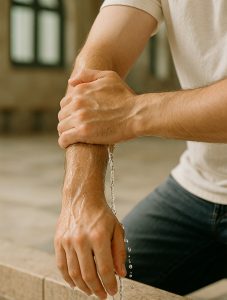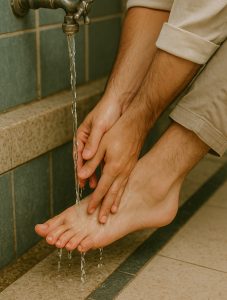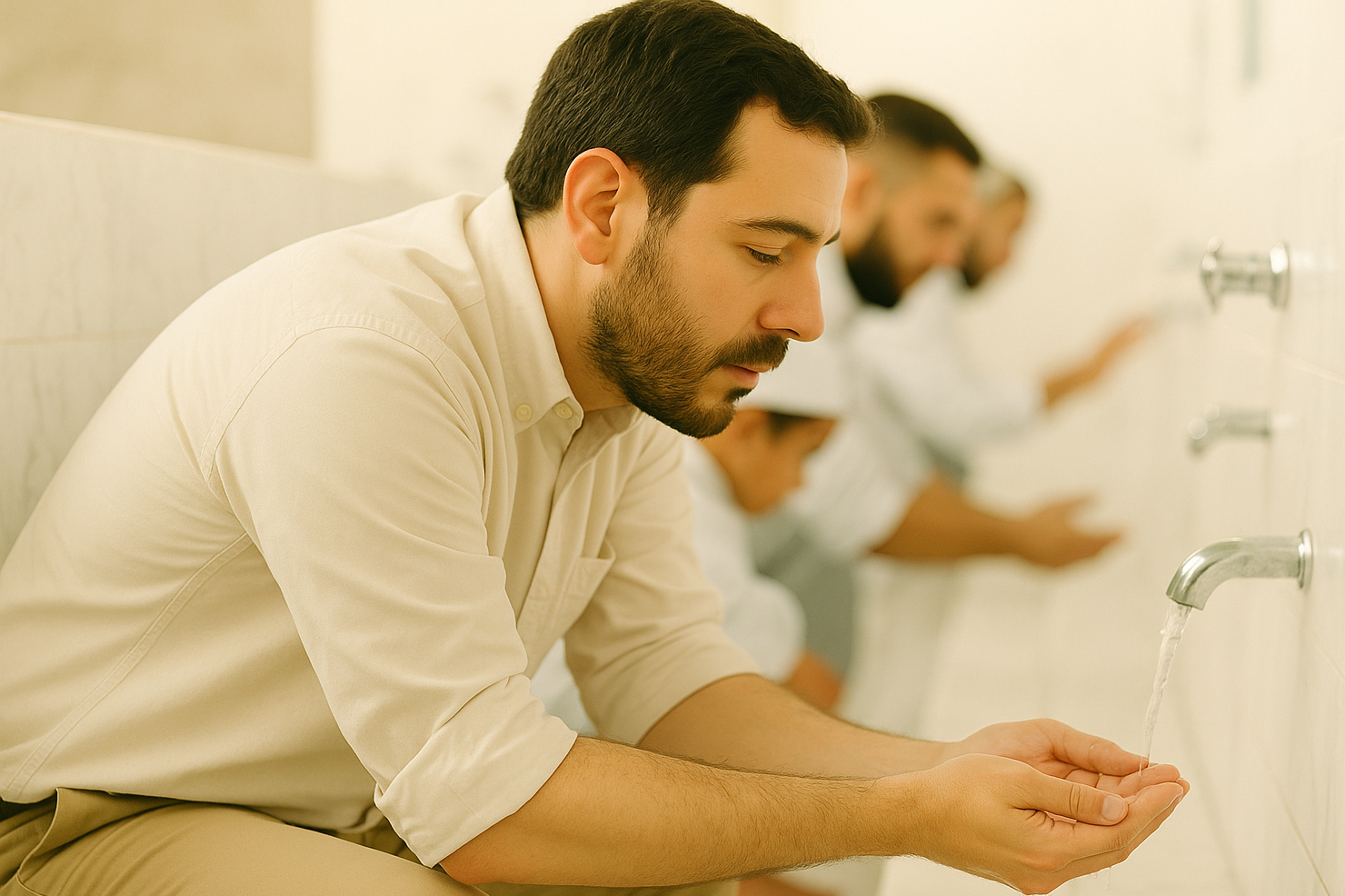Short Summary
Wudu (ablution) is a purification act. It consists of washing the face, arms, wiping the head, and washing the feet in order, without delay. Men and women perform it the same way.
Key Points
- Obligatory acts: face, arms, wiping head, feet, in order, without delay.
- Conditions: must be Muslim, sane, discerning, using pure water, and no barriers on skin.
- No gender difference: men and women perform wudu identically.
Detailed Answer
The pillars of wudu are: washing the face, washing the arms up to the elbows, wiping the head, washing the feet up to the ankles, washing these parts in order, doing these actions consecutively.
There are two ways of doing wudu:
-
The acceptable way (minimum valid wudu): the 4 obligatory acts mentioned in Qur’an 5:6 → face, arms, head, feet (done in order, without long gaps).
-
The complete way (perfect wudu): includes Sunnah acts like intention, Bismillah, washing three times, rinsing mouth and nose, wiping ears, and making du‘a after.
Pillars of Wudu (Step by Step)
Wudu has four obligatory acts in the Qur’an, which become six pillars when order and continuity are included.
| Step |
Action |
| 1. Washing the Face |
Wash the face once, including the mouth and nose |
| 2. Washing the Arms |
Wash both arms up to and including the elbows once |
| 3. Wiping the Head |
Wipe the entire head once with wet hands, including the ears |
| 4. Washing the Feet |
Wash both feet up to and including the ankles once |
| 5. Correct Order |
Perform the above acts in sequence: face → arms → head → feet |
| 6. Continuity |
Wash each part without long breaks, before the previous one dries |
Performing Wudu
|
1- Washing the Face
|
Action |
 |
Wash the entire face once,
from hairline to chin and ear
to ear, including rinsing the mouth
and nose.
Reference
“O you who have believed, when you rise to [perform] prayer, wash your faces…”
(Qur’an 5:6)
|
|
2. Washing the Arms up to the Elbows
|
Action |
 |
Wash the entire face once,
from hairline to chin and ear
to ear, including rinsing the mouth
and nose.
Reference
“O you who have believed, when you rise to [perform] prayer, wash your faces…”
(Qur’an 5:6)
|
|
3. Wiping the Head
|
Action |
 |
Wipe the entire head with wet hands, including the ears.
Reference
“….. when you rise to prayer,…… and wipe over your heads …………” (Qur’an 5:6)
(Qur’an 5:6)
|
|
4. Washing the Feet up to the Ankles
|
Action |
 |
Wash the entire face once,
from hairline to chin and ear
to ear, including rinsing the mouth
and nose.
Reference
“……..when you rise to [perform] prayer, …….and wash your feet to the ankles.”
(Qur’an 5:6)
|
|
5. Correct Order
|
Action |
 |
Each act must be done in the sequence mentioned in the Qur’an.
Reference
“This is how wudu is. Whoever adds to it or decreases from it has done wrong.”
(Sunan Abu Dawood 116, Hasan)
|
|
6. Continuity (No Long Gaps)
|
Action |
 |
Each action must follow without delay, meaning the next limb
is washed before the previous one dries under normal conditions.
Reference
“Complete your wudu and let not anyone leave part of it unwashed.”
(Musnad Ahmad 4856, Sahih)
|
What This Means for You
To have a valid wudu, you must complete all six pillars in order without delay. Without these, Salah is invalid. Sunnah acts like Bismillah, washing three times, and du‘a beautify wudu but are not pillars.
And Allah knows best
References
Primary Sources:
- Qur’an 5:6
- Sahih Muslim (226)
- Sunan Abu Dawood (116)
- Musnad Ahmad (4856)
Secondary Sources:
- al-Mughni – Ibn Qudāmah: A detailed fiqh encyclopedia explaining rulings of worship and purification.
- al-Majmuʿ – Imam al-Nawawi: A commentary on Shafi‘i fiqh with hadith proofs for wudu.
- al-Sharh al-Mumtiʿ – Ibn ʿUthaymin: A modern, practical explanation of rulings on purification.
- al-Mulakhkhas al-Fiqhi – al-Fawzan: A concise guide to fiqh covering the conditions and acts of wudu.
Thanks for your feedback!







